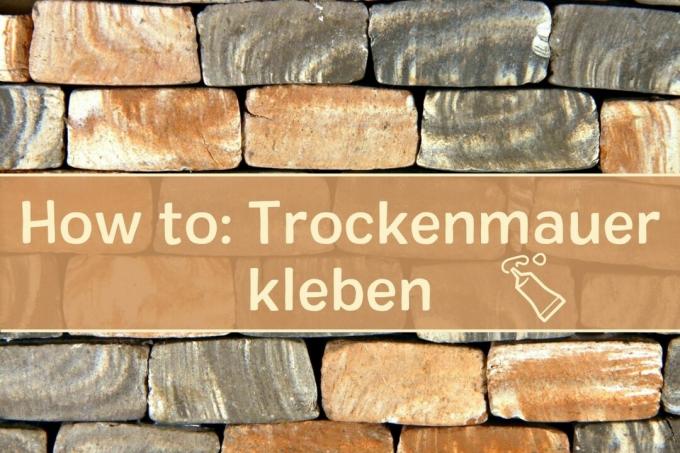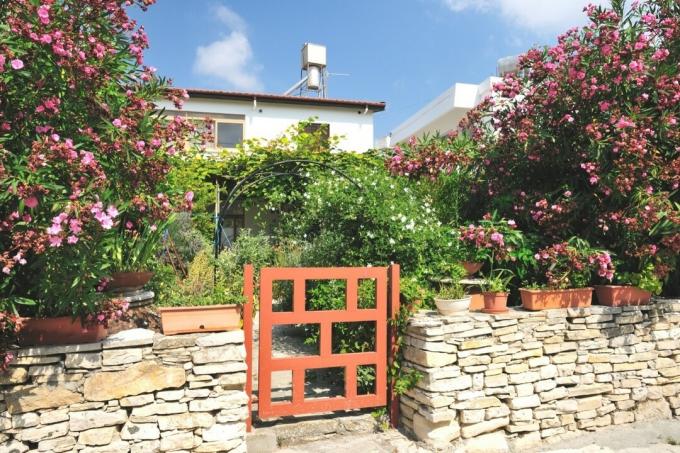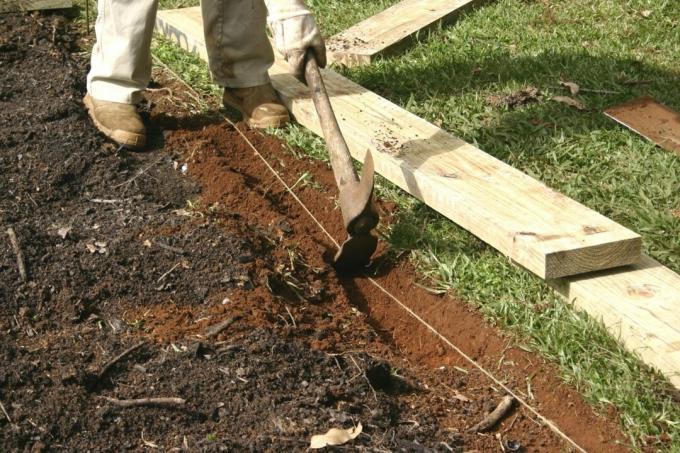
table of contents
- What is a dry stone wall?
- Tools and materials
- Gluing drywall: instructions
- preparation
- Glue wall
- frequently asked Questions
There are many reasons to build a wall in your garden. But you don't always have to work with mortar. You can also glue a drywall instead.
In a nutshell
- is erected almost without mortar
- Concrete foundations as the basis
- Connect the stones with a special adhesive
- Planting possible as a conclusion
What is a dry stone wall?
Dry stone walls mostly consist of natural stones, which are layered "dry" on top of one another as far as possible without mortar and concrete. For the necessary hold, the bricks are connected to one another with a special adhesive with almost no visible joints. Due to the comparatively simple construction method, the construction of a drywall is also possible for laymen without any problems. However, dry stone walls also have other advantages:
- natural look
- weather and color resistant
- planted joints create biotopes
- flexible redesign possible
Like others
Walls made of sandstone, for example, dry stone walls can stand freely in the garden or serve as a support. But they are also suitable as- Garden wall
- Slope reinforcement
- decorative element
- for edging a sandpit

Note: Depending on the federal state, free-standing garden fences may be of different heights. Before building a drywall, check with your local authority for the rules that apply.
Tools and materials
For a drywall, you need, of course, above all frost-free assembly or special adhesives as well as natural stones. Here are particularly suitable
- limestone
- granite
- slate
- Sandstone
- Quartzite
You also need:
- Guidelines
- Wooden pegs
- Boards for shuttering
- Mineral mixture such as crushed stone or gravel
- concrete
- mortar
- fine sand
- for slope walls: plastic film and drainage pipe
- possibly. silicone
- possibly. Earth and plants

In order to be able to lay this material correctly, you should also have the following tools at hand:
- Digging tools such as a shovel or spade
- Padfoot
- concrete mixer
- Trowel for applying concrete and mortar
- Squared timber
- Spirit level
- possibly. Stone cutting machine
- possibly. Applicator gun
Gluing drywall: instructions
Once you have procured materials and tools, nothing stands in the way of your building project. Take about two to three days and do the following:
preparation
- Mark the course of the wall and mark the base area with cords and wooden pegs
- Remove the sod and dig a wall-wide trench 40 to 80 centimeters deep
- Use board formwork for sandy soils
- Compress the subsoil with a pad foot
- Pour 20 to 40 centimeters of mineral mixture into the pit in layers and compress it steadily
- Mix concrete moist to slightly plastic
- Fill the pit with concrete
- Compact the foundation with a pad foot and smooth it out with a square timber using a large spirit level
- Let the concrete bind

Note: Do not process concrete below 6 degrees Celsius. Because of the cold temperatures, it will not bind.
Glue wall
- Place the first row of stones on a layer of mortar about 3 cm thick
- Align the stones at the same height and level and knock them down with a rubber mallet
- Let it set for 24 hours
- Apply the special adhesive to the stone according to the manufacturer's instructions, place the stone on top and press lightly
- Glue stones on top of each other in a staggered manner
- Even out uneven spots with fine sand
- with slope walls: attach plastic film and drainage pipe between wall and slope
- Lay the finishing stones as the top row
- Place and grout cover plates as desired or fill gaps with earth and plant

Tip: If the material of the bricks is very absorbent, moisten the surfaces to be glued with a sponge before gluing.
frequently asked Questions
The wall is considered a dry stone wall because its joints are not filled with concrete or mortar. They are more or less "dry". But there are also dry stone walls that are built entirely without mortar or glue. They only hold together because of the inserted layers of earth or sand and the interlocking of the stones.
By introducing the mineral mixture, you save excavation work and material costs. However, if you want your drywall to be even more resilient, you should put more concrete in the trench.
Unlike concrete or mortar, the special adhesive does not have a leveling or filling effect. If the foundation or row of stones is not completely level, the entire drywall will quickly become crooked.
It depends on what material you are using. Assembly adhesives are available for as little as 7 euros, you may even have other materials at home.



